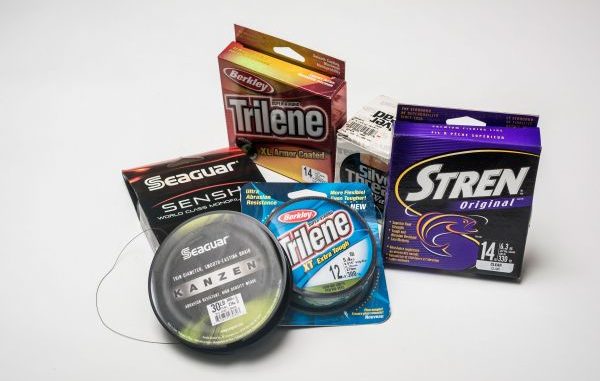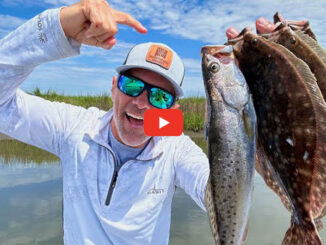
Selecting a contrasting-colored line is critical to ‘see’ the bite, Champagne says
It’s not unusual for anglers in Lake Pontchartrain to deal with a variety of conditions that make it tough to actually feel a speckled trout bite, including wind, a foot-and-a-half of chop and steady, strong current – especially along the bridges.
“We’re playing against a lot of different situations where you don’t feel the bite. But a lot of times you can see it,” said Chas Champagne, owner of Matrix Shad and Vortex Shad soft plastic paddle tail lures. “That’s why Lake Pontchartrain gets a reputation as being hard to fish.
“People think you can go out there blind and just jig it around and it’s going to feel like a shark is hitting your line. But it really feels like a mosquito is on your line.”
That’s why Champagne and other Lake Pontchartrain fishing veterans rely on their eyes – as much as the feel in their hands – to monitor their line from the rod tip to the water as they fish the bottom anywhere from 10- to 25-feet down.
“You’ll notice, cast after cast, the rate it takes for it to hit the bottom. It’s the same rate every time,” Champagne said. “You can see it sinking and floating, and you can watch it sinking down.
“If it looks like it’s either sinking too fast or it looks like it quit sinking and you know you weren’t on the bottom yet – that could be a fish that grabbed it while it’s falling,” he said. “So when the rate changes, whether it’s faster or slower, a lot of times that’s a fish and you don’t even feel it in your rod because it’s in 15 feet of water and it’s choppy and there’s current.”
Champagne typically uses 17-pound Stren Original monofilament line because it’s easy on his eyes.
“It’s got a clear blue tint to the line and it really separates itself from the background color of the water,” he said. “Your eyes can see it easy.”
He’s not a fan of braid, but he suggested choosing a highly-visible color with a short leader if that’s your line of choice. Avoid green in Lake Pontchartrain, he said.
“Braid is really popular right now within the fishing world, but the problem is a lot of it comes in forest green, and you don’t want to use that because it blends in with the water,” he said. “If you’re fishing with green braid, you’re really wasting your time. You can’t see it. So make sure you use a white or a yellow so you can see it.”
The majority of days he fishes, the 17-pound Stren is what he uses.
“If I’m on some really big stuff, where I have a shot at a 7- or 8-pound speck, I’ll use 20-pound Stren. If we’re just fishing the bridges on a typical day, we’ll use 17, and once we get off the bridges and go in the marsh catching school trout and reds, we’ll drop it all the way down to 14 sometimes.
“But 17 is a good number – that’s what we use about 70-percent of the time.”
The key is to react when you detect any type of difference in your line – either visually or by feel.
“We typically have the rod in the 3 to 6 position when we’re jigging, and we rare it back all the way over our heads to set the hook. If nothing is there, just let it fall back to the bottom,” Champagne said. “Our little joke we always say is, ‘Hook sets are free.’
“It’s better to take a swing and a miss than to not know a bite is there.”


